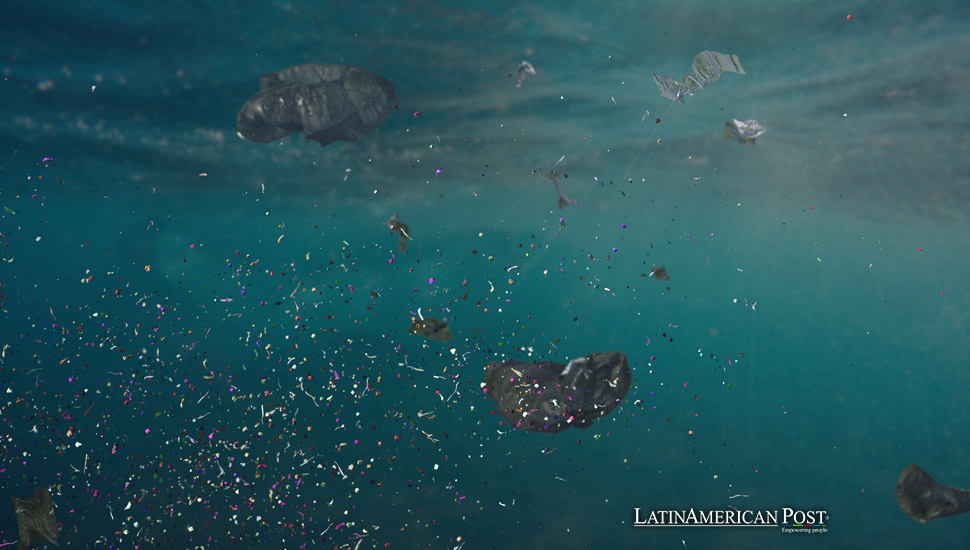Microplastics and Bacteria Threaten Colombia’s Ciénaga Grande Ecosystem

A new study reveals the alarming presence of microplastics and harmful bacteria in Colombia’s Ciénaga Grande de Santa Marta, posing environmental and human health risks. Researchers warn that the contamination threatens the region’s biodiversity and local fishing communities.
A Vital Yet Vulnerable Ecosystem
The Ciénaga Grande de Santa Marta, Colombia’s most extensive coastal lagoon system, has long been a haven for biodiversity and a lifeline for local communities reliant on fishing. Covering 1,321 km², this shallow ecosystem, with depths ranging between 1 to 1.8 meters, serves as an intersection of freshwater from four rivers and marine water from the Caribbean Sea. Its mangrove-lined banks and proximity to two national parks have made it a globally recognized wetland, listed under the Ramsar Convention as a critical area for conservation.
The Ciénaga’s environmental significance is undeniable. It sustains rich flora and fauna, providing habitat for various species while acting as a cornerstone for local economies centered on fishing. However, the lagoon’s natural beauty and productivity now face a dire threat—an alarming level of contamination by microplastics and bacteria. According to a recent study by researchers from the University of Barcelona (UB) and Colombia’s Marine and Coastal Research Institute (INVEMAR), this pollution disrupts the ecological balance, endangering communities’ livelihoods dependent on the lagoon’s health.
Limited water circulation within the Ciénaga Grande exacerbates the accumulation of pollutants, turning the lagoon into a trap for contaminants arriving via rivers, sewage, and direct waste dumping. The constant influx of microplastics and harmful bacteria has created a hazardous environment for the lagoon’s biodiversity and the human populations that rely on its resources. The study, published in the Journal of Hazardous Materials, underscores the growing vulnerability of the Ciénaga Grande and highlights the urgent need for intervention.
A Dangerous Combination
The joint research led by Ostin Garcés-Ordóñez and Miquel Canals of the University of Barcelona’s Marine Geosciences Group paints a stark picture of the contamination plaguing the Ciénaga Grande. According to the study, tiny plastic particles less than five millimeters in size have become a significant vector for pathogenic bacteria. These particles, which can enter the ecosystem through various channels, including plastic waste and degraded materials, have been found in sediment samples and the digestive tracts of fish in the region.
Alarmingly, fish regularly consumed by local populations have been found to contain microplastics, raising serious concerns about the potential for human exposure to harmful contaminants. The microplastics themselves are not inherently toxic, but their role as carriers for pathogenic bacteria poses a far greater threat. The researchers identified 19 bacterial species on the microplastics, many of which are capable of causing disease.
Among the most prevalent bacteria is Aeromonas caviae, known to cause gastroenteritis. This bacterium was found on microplastics in the water, sediment, and even within fish, signaling a widespread contamination of the lagoon’s ecosystem. Additionally, Vibrio cholerae, the bacterium responsible for cholera, was the second most abundant species identified, though it was detected only in water samples. The presence of these bacteria on microplastics significantly heightens the risks to marine life and human health.
The study also detected Enterobacter roggenkampii and Pseudomonas fluorescens, both of which can cause infections, in microplastics extracted from fish and water samples. The discovery of these bacteria underscores the potential for cross-species contamination and highlights the need for further research into the mechanisms by which these pathogens may spread within the lagoon’s ecosystem.
Potential Health Risks to Fish and Humans
The contamination of the Ciénaga Grande’s waters has far-reaching consequences, extending beyond environmental degradation to directly impact the health and well-being of local communities. As fish from the lagoon form a critical part of the local diet, the presence of pathogenic bacteria on microplastics in the digestive tracts of these fish suggests a tangible risk of disease transmission to humans. Gastroenteritis, cholera, and other infections are among the potential health risks that may arise from consuming contaminated fish.
Although the study does not definitively confirm that these bacteria can cause human disease outbreaks, the researchers emphasize the need for further investigation. Ostin Garcés-Ordóñez, one of the study’s lead authors, notes that future research should focus on identifying the specific virulence genes that could enable these bacteria to trigger diseases in humans and fish. Such findings would be critical in understanding the full scope of the health risks posed by this contamination and in developing strategies to mitigate those risks.
The presence of pathogenic bacteria on microplastics is particularly concerning because these particles can travel through the food chain, reaching humans through fish consumption. Even more alarming is that once inside the body, these microplastics could serve as carriers for bacteria, potentially increasing the likelihood of infection. This calls for immediate public health interventions, mainly through awareness campaigns to inform local populations about the dangers of consuming contaminated fish.
Additionally, researchers recommend establishing a comprehensive monitoring system to track the levels of bacterial contamination and microplastics in the lagoon. This system could serve as an early warning mechanism, allowing authorities to take swift action in a health crisis. Implementing safety protocols for the fishing industry is also critical, as it could help reduce the risk of contaminated fish reaching local markets.
Global Implications and the Search for Solutions
The findings from the Ciénaga Grande study are not unique to Colombia. Coastal lagoons worldwide face similar challenges from microplastic contamination, highlighting the global nature of this environmental and public health crisis. The semi-enclosed nature of many lagoons makes them particularly vulnerable to the accumulation of pollutants, and the fishing communities that depend on these ecosystems are often the first to experience the consequences.
For scientists, the Ciénaga Grande provides an ideal model for studying the broader impacts of microplastic pollution and bacterial contamination in coastal lagoon systems. By understanding the mechanisms at play in this specific ecosystem, researchers can develop strategies that may apply to similar environments around the world. In their 2022 study published in Environmental Pollution, the same researchers identified alarming levels of microplastic contamination in 50 coastal lagoons globally, further underscoring the need for coordinated, international efforts to address this issue.
Solutions to these problems will require a multifaceted approach. Strengthening governance and improving waste management infrastructure are essential steps in reducing plastic waste entering ecosystems like the Ciénaga Grande. Additionally, better public health infrastructure and sanitation services are needed to mitigate the spread of pathogenic bacteria.
Education and capacity-building among local communities will also be crucial in ensuring that residents are equipped to monitor and respond to the risks posed by environmental contamination. By involving scientists, public health officials, and local communities in the management of these ecosystems, more sustainable solutions that protect both human health and biodiversity may be possible.
Also read: How a Colombian Airline Paved the Way for Latin American Aviation History
Finally, the study’s authors stress the need for integrated environmental management strategies that consider ecological and public health concerns. Such strategies would not only help preserve the natural beauty and biodiversity of places like the Ciénaga Grande but also safeguard the health of the people who rely on these ecosystems for their survival.





